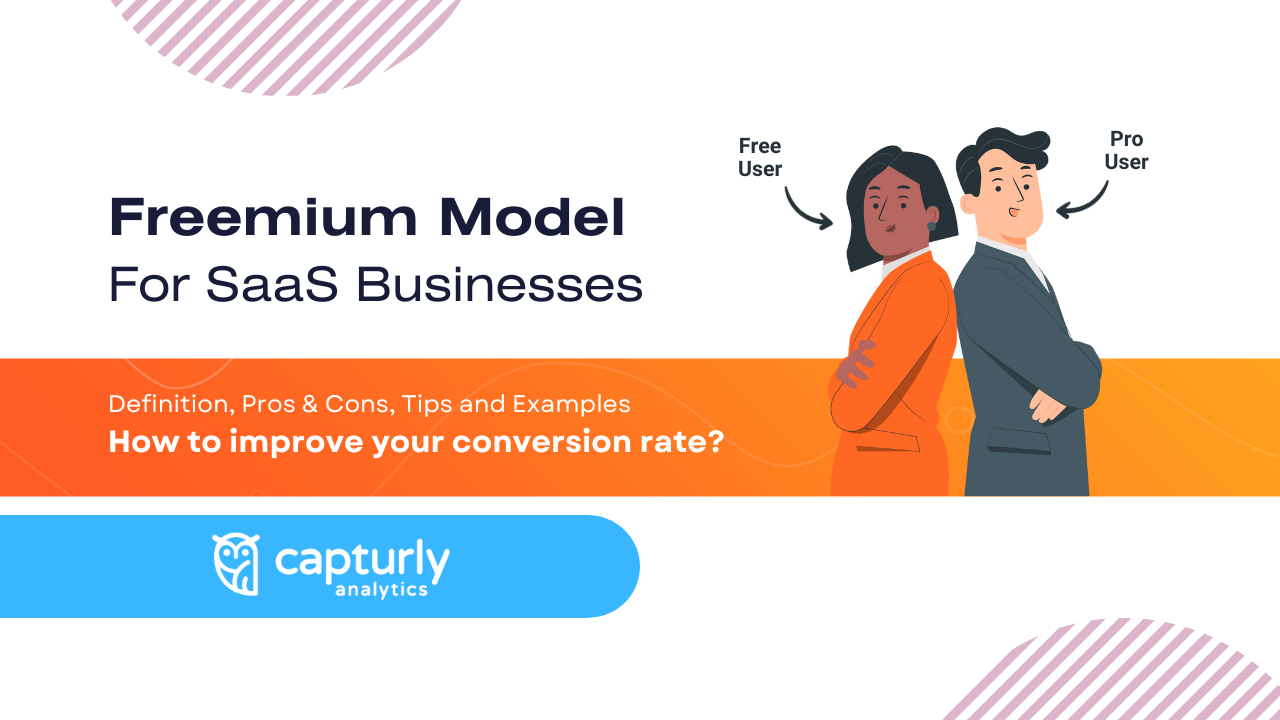Before we get started on how to increase the Freemium conversion rate, let’s take a look at what the Freemium Model is exactly. The freemium model, a blend of “free” and “premium,” represents a clever user acquisition strategy widely adopted by Software as a Service (SaaS) businesses. This strategy categorizes users into two clear tiers: a free tier and premium plans, based on their choice to invest in an upgraded account. In the realm of freemium, free users have access to a restricted set of the product’s features, while premium users enjoy the benefits of enhanced capabilities.
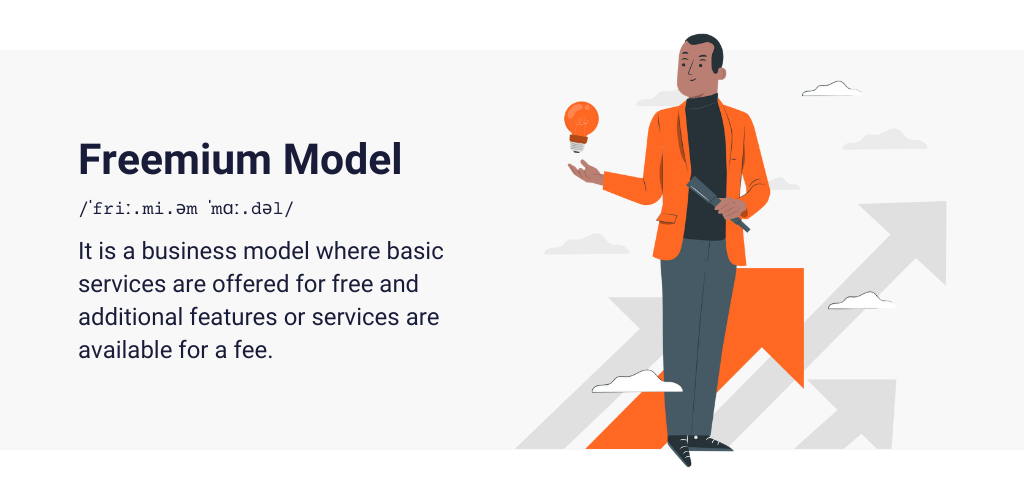
Let’s dive into the pros and cons of the freemium business model, get to know some companies as freemium examples and learn actionable tips on how to increase the freemium conversion rate for SaaS companies!
Table of Contents
The Pros of the Freemium Model
✅ Simplified User Onboarding
The freemium model has revolutionized the process of user onboarding. It lets users try new products or services without any initial financial commitment. People naturally like trying things for free, making this approach highly attractive. This initial attraction allows businesses to build a substantial base of free users, who can later be nurtured into becoming paying customers.
✅ User Convenience
Freemium users can experiment with new products without the fear of risking their hard-earned money, making it an appealing proposition.
✅ Revenue from Free Tiers
Interestingly, even the free tier can generate revenue from free users through various means. For example, advertising serves as a common revenue source. Displaying ads to free users can help offset the costs associated with providing the service.
✅ Value-Driven Acquisition
The freemium model operates on the fundamental premise that a product’s value should be the driving force behind user acquisition. People are naturally interested in a product when they see its benefits in the free version. Instead of using a pushy sales approach, businesses focus on demonstrating how valuable their product is to both free and premium users.
✅ User Gains
Freemium users are attracted to a product because they genuinely recognize its value, aligning their interests with the providers.
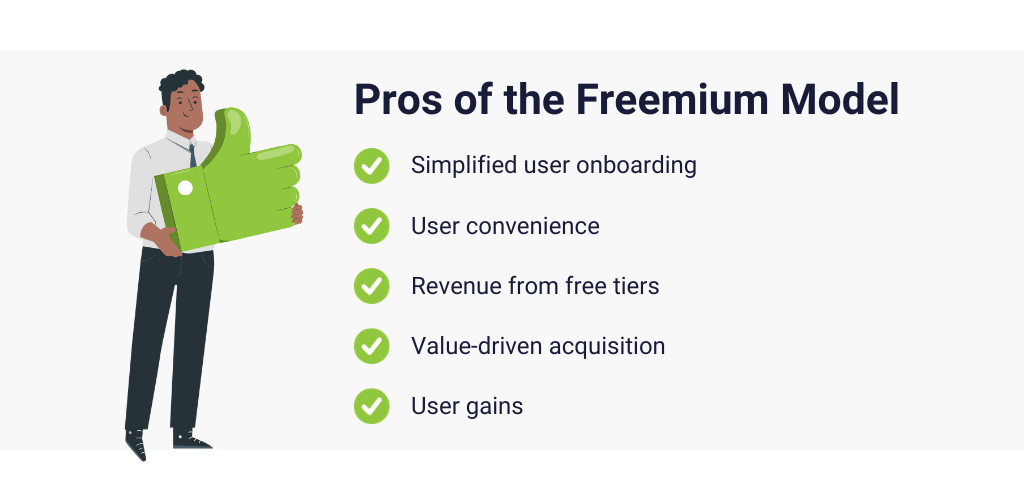
The Cons of the Freemium Model
❌ Conversion Uncertainty
It’s important to note that not all free users will convert to paid customers. Some may find the features in the free tier satisfactory and might not see a compelling reason to upgrade. This uncertainty in conversion can be challenging for businesses that rely on premium users for revenue.
❌ Free Forever Users
For some free users, the free tier might meet their needs, which can lead to a lack of motivation to explore premium features.
❌ Feature Saturation
Offering a ton of features in the free plan can unintentionally discourage users from upgrading. If free users already find value in the free tier and don’t perceive substantial benefits in the premium features, they may choose to stick with the free version.
❌ Increased Costs
Supporting free users can be costly in terms of server costs, customer support, and maintenance. Over time, as the number of free users grows, these costs can become significant.
❌ Clarity Matters
If the free tier fails to offer a clear preview of the product’s value, it can result in user drop-off. If users can’t understand what the product offers and how it addresses their needs, they may abandon the service before fully exploring its potential.
In the freemium model, navigating the advantages and disadvantages often requires a delicate balancing act. The key is to find the right balance that brings in and supports free users, while also giving them a good reason to think about upgrading. It’s about ensuring that the user’s experience in the free tier is valuable enough to drive conversions without overwhelming them with features.
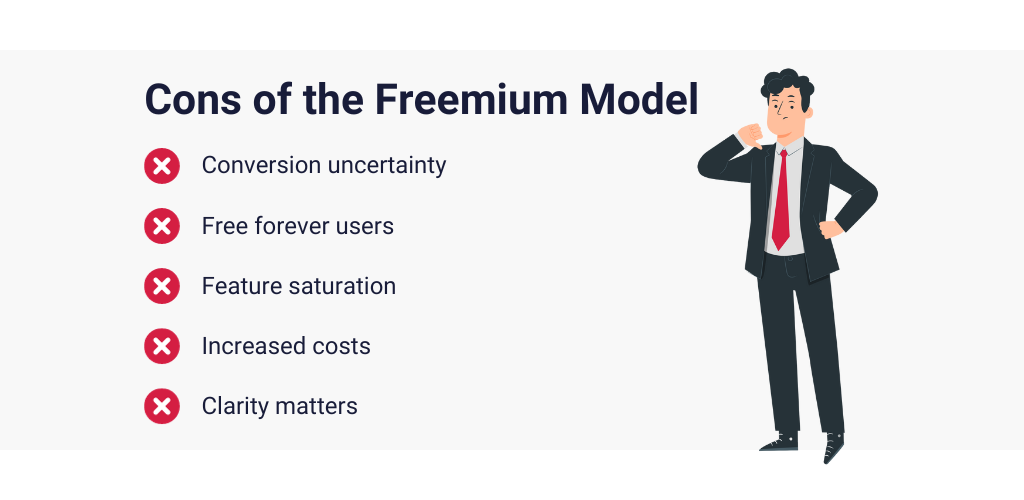
The Balancing Act: Providing Improved User Experiences in Freemium
Taste of Values
For users in the free plan, the freemium model is like a delightful sampler. It grants them the opportunity to delve into your product, test its features, and uncover its potential. This hands-on experience nurtures trust and a genuine appreciation for your product, even if certain features are limited. It’s like strolling into an ice cream parlor and trying a free sample; you get a sneak peek of the flavors and quality, encouraging you to relish the whole scoop.
Freedom to Explore
Freemium users enjoy the freedom to explore your product and enjoy its benefits without the immediate need for a financial commitment. This freedom encourages them to dive into your product’s capabilities, allowing a profound connection to form. The gradual process of discovering value organically fosters a sense of ownership, making them more open to premium features when they feel ready to unlock advanced capabilities.
Value Recognition
The freemium model nurtures value recognition among users. By the time they reach the limits of the free tier, they’ve already experienced how your product addresses their problems. When your users decide to upgrade to the premium tier, they don’t have to take a big risk because they understand the value they’re getting. It’s like test-driving a car that convinces you to buy it – you’ve experienced the comfort and features, and you’re ready to invest.
In the freemium model, both businesses and users reap the benefits. Businesses enjoy reduced customer acquisition costs and the potential for a larger user base, while users get to explore a product’s value at their own pace. It’s a win-win scenario that showcases the effectiveness of the freemium model in the SaaS landscape.
💡 Do you know the average conversion rate for SaaS companies? Check our article on it! 👉 Average conversion rate for SaaS
Real-Life Application of the Freemium Model in Web Analytics
The freemium model proves to be a versatile strategy, especially when applied to web analytics. It equips businesses with invaluable insights into user behavior and website performance. Now, let’s dive into real examples of companies that have harnessed the potential of freemium web analytics. Each of these companies has employed a unique approach, offering distinctive benefits, and delivering remarkable user experiences.
1. Capturly: Empowering Website Optimization
Capturly stands as a prime example of how the freemium model can revolutionize the realm of web analytics. This exceptional web analytics and feedback tool delivers vital insights into user interactions on websites. Capturly’s free tier provides a glimpse of its capabilities, encompassing heatmap tracking and session recordings. Users can see where visitors click, track their mouse movements, and pinpoint where they tend to drop off. This invaluable insight empowers businesses to optimize their websites, resulting in improved user experiences and enhanced conversion rates.

Capturly’s freemium model brings many advantages, making it an appealing choice for businesses of all sizes. Here’s how it benefits users:
- Affordable Accessibility: Small businesses and startups can rejoice, as Capturly’s freemium model provides them with affordable access to essential web analytics tools. You no longer need to make a hefty financial commitment to harness the power of web analytics.
- Actionable Insights: The free tier offers users actionable insights that can have an immediate impact on their website’s performance and user experience. You can make informed decisions based on the data you gather, all without breaking the bank.
- Exploration: You have the freedom to explore the powerful heatmap and session recording features. This hands-on experience allows you to gain a deeper understanding of user behavior, a critical aspect of website optimization.
- Value Realization: As you delve into Capturly’s capabilities and utilize heatmap tracking, you begin to uncover areas for improvement on your website. This process of discovery helps you realize the immense value that Capturly’s advanced features bring to the table. You’ll see how they can significantly enhance your website’s effectiveness in meeting your business objectives.
2. Google Analytics 4: The Freemium Giant
Google Analytics 4, including its premium counterpart Google Analytics 360, is a well-known name in the world of web analytics. This platform works with a freemium model, offering its robust analytics services to businesses of all sizes. What makes it stand out is that users can access a wide array of features in the standard version without incurring any costs. These features range from tracking website traffic to monitoring user behavior. Google Analytics is a versatile tool designed to cater to both beginners and advanced users alike.

Google Analytics brings a multitude of benefits to the table, enhancing both data processing and the overall user experience.
One of its standout advantages is its ability to handle a vast volume of data without imposing any charges. This makes Google Analytics a preferred choice for websites with high traffic, allowing businesses to efficiently process and analyze their data.
Additionally, Google Analytics seamlessly integrates into the broader Google ecosystem. Being a Google product, it offers users the advantage of a comprehensive suite of services, contributing to a more holistic and streamlined experience.
3. Crazy Egg: Visual Feedback and Analysis
In the world of web analytics, Crazy Egg emerges as a robust tool dedicated to offering invaluable visual feedback and user interaction insights for websites. It stands out with its all-in-one suite of web analytics features, which includes heatmaps, scroll maps, session recordings, and A/B testing. The unique approach of Crazy Egg is its adoption of a freemium model, which grants users access to a selection of its features, making it especially advantageous for businesses aiming to gain deeper insights into user behavior.

What makes Crazy Egg even more appealing is its adoption of a freemium model, granting users access to a selection of features at no initial cost, making it a practical choice for businesses of all sizes.
Crazy Egg’s primary focus on visual feedback and analysis empowers users to visually map user interactions using heatmaps and scroll maps. This aids businesses in optimizing web design and content placement, ultimately enhancing the user experience. Furthermore, the freemium model ensures cost-efficient optimization, allowing users to drive improvements without incurring high expenses.
This strategic emphasis on visual feedback and analysis positions Crazy Egg as an excellent choice for businesses seeking to enhance their web analytics capabilities.
Best Tips to Increase Freemium Conversion Rate
The freemium model’s success hinges on your ability to convert free users into paying customers. Here are some actionable tips to maximize your freemium conversion rate, ensuring that both businesses and users reap the benefits.
1. Provide a Sneak Peek into the Premium Features
When offering a free tier of your product, make sure that free users get a preview of the value of premium plans. This sneak peek motivates them to explore more, gradually discovering the benefits and features your product offers. It’s like opening the door to a world of possibilities, enticing them to see what lies beyond.
2. Create a Frictionless Upgrade Path
Setting limitations effectively creates friction that encourages users to consider upgrading to a premium plan. The transition from free to premium should be smooth, offering additional benefits that users find appealing. This frictionless upgrade path ensures that the user journey is seamless, motivating users to make the switch. Not to mention that a frictionless upgrade path can increase freemium conversion rate effectively.
3. Support Step-by-Step Discovery
Free users should gradually discover the value of your product as they use it. This progressive exploration fosters a sense of value realization. Users unlock new features and functionalities over time, making them appreciate the depth and breadth of your product. It’s a journey of discovery that keeps them engaged and interested.
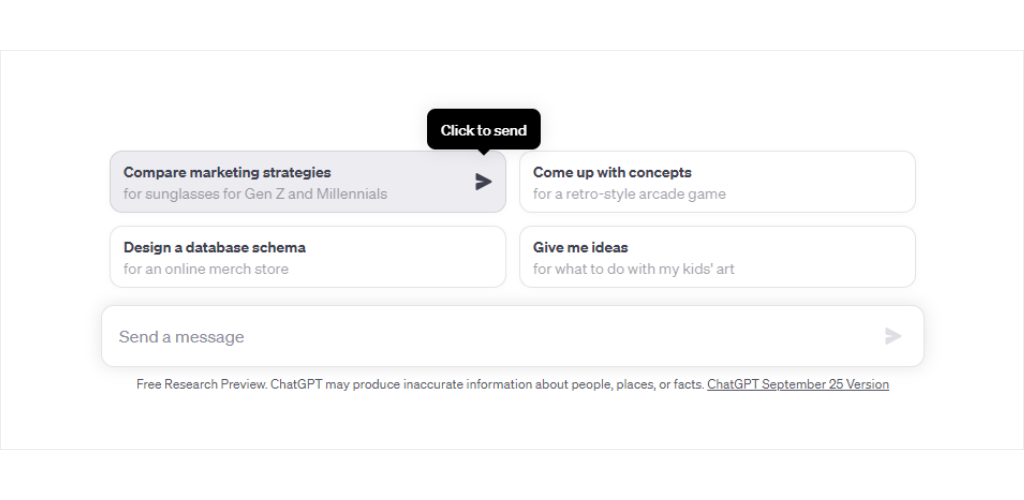
4. Encourage the Upgrade
When free users reach the limitations of the free tier, they should recognize the benefits of upgrading. This realization makes transitioning to a premium plan a more enticing proposition. By highlighting the advantages of premium features and how they can further enhance the user experience, you create an attractive incentive for free users to upgrade.
5. Gamify the Freemium Experience
Introduce gamification elements into your freemium model. Create challenges or milestones that free users can achieve within the product. As they progress, they unlock additional features or premium content. Gamification keeps users engaged and encourages them to explore premium offerings to achieve their goals.
6. Harness the Power of Social Proof
Leverage social proof to boost conversions. Encourage free users to share their positive experiences with your product on social media or within your community. User testimonials, case studies, or a dedicated section for success stories can build trust and credibility. When prospects see others benefiting from premium features, they are more likely to upgrade.
7. Enhanced User Experience
Placing a strong emphasis on customer success yields enhanced user experiences. When users receive the support and guidance they need to maximize the product’s potential, their satisfaction naturally increases. They’re not left to navigate the product on their own, and this proactive approach to user assistance creates a more positive overall experience.
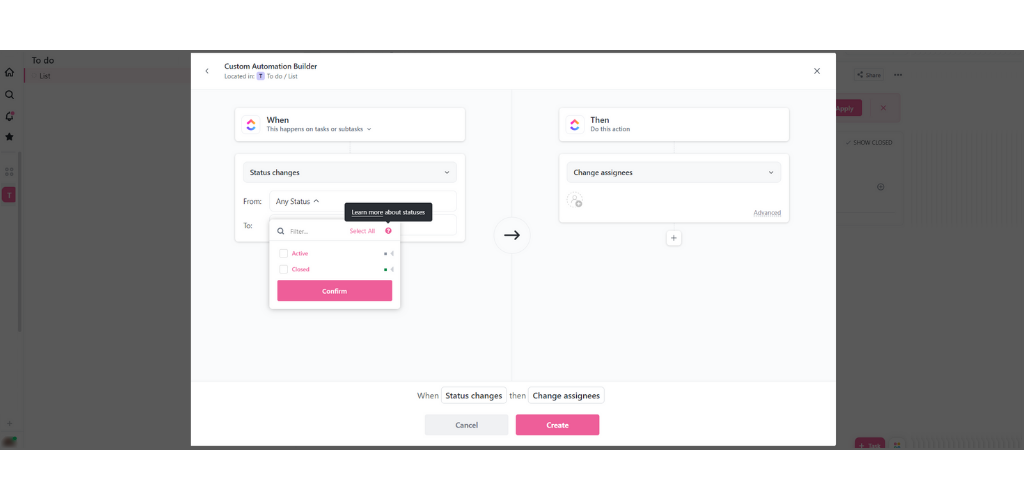
8. Value Realization
A core aspect of customer success is ensuring that users fully realize the value the product offers. This realization is a powerful motivator for users to consider upgrading to a premium plan. When they grasp how the product can effectively address their needs and improve their tasks, the inclination to unlock additional features and benefits becomes much stronger.
9. Guided Onboarding
Effective onboarding is a critical element of customer success. Users should receive guidance on how to use the product efficiently from the moment they start. A structured and supportive onboarding process helps users understand the product’s potential and sets them on the path to success. This initial guidance plays a pivotal role in their long-term engagement with the product.
10. In-App Assistance
In-app assistance, through prompts and notifications, is another key component of customer success. Users should receive real-time guidance within the product, helping them make the most of its features. These in-app prompts not only assist users in their interactions with the product but also keep them engaged and enthusiastic about exploring its capabilities.
11. Offer Time-Limited Promotions
Periodically introduce time-limited promotions, discounts, or special offers for free users to upgrade. Create a sense of urgency by setting a clear expiration date. Free users who are on the fence about upgrading may be more inclined to take action when they know they’re getting a limited-time deal.
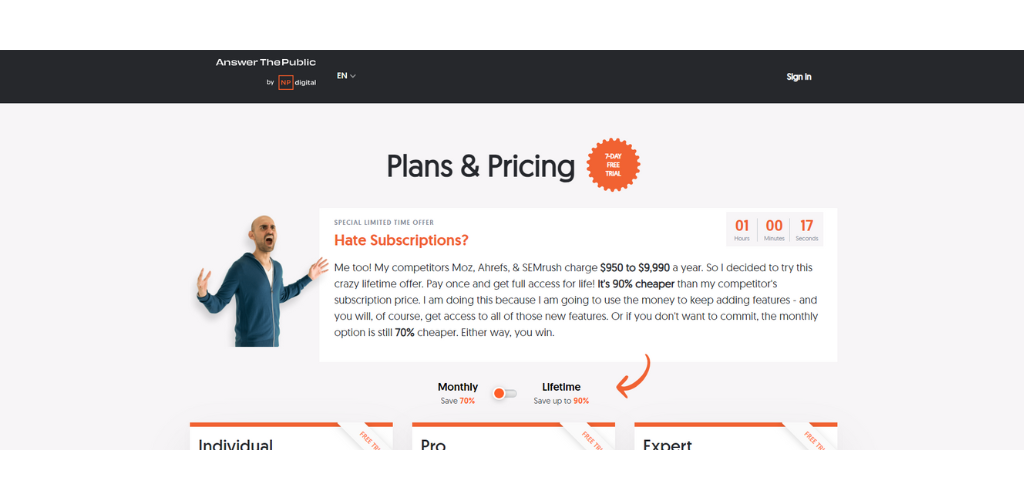
12. Personalize Upgrade Recommendations
Implement machine learning algorithms to personalize upgrade recommendations for free users. Analyze their behavior and usage patterns within your product to suggest premium features that align with their needs. A personalized approach can significantly increase the relevance of your upgrade suggestions and conversion rates.
13. Collaborate with Influencers to Increase Freemium Conversion Rate
Partner with industry influencers or experts related to your product’s niche. Influencers can create content or tutorials showcasing the benefits of the premium features. Their endorsement can carry substantial weight and motivate free users to upgrade. Ensure the influencers’ content aligns with your product’s value.
Maximizing Freemium Conversion Rate
The freemium model offers a dynamic approach to user acquisition and conversion. By setting the right product limitations and combining them with a full-featured free trial, businesses can strike a balance between value preview and conversion incentives. Focusing on customer success and consistently reminding users to upgrade can enhance the user experience and boost conversion rates.
In the world of web analytics, companies like Capturly, Google Analytics, and Crazy Egg exemplify how freemium models benefit both businesses and users. By providing a taste of advanced features and visual feedback, they empower businesses to optimize their websites and help users understand the power of web analytics.
By taking a more hands-on approach with inside sales and using targeted messages based on user behavior, businesses can further increase conversion rates and improve user experiences.
Ultimately, the freemium model is a powerful strategy when executed thoughtfully. It grants users the opportunity to explore products and services without financial commitment while providing businesses with a cost-effective means of acquiring and nurturing customers. By ensuring that the user journey is engaging, educational, and value-driven, businesses can successfully convert free users into paying customers and experience the full benefits of the freemium model.
Don't forget, sharing is caring! :)

